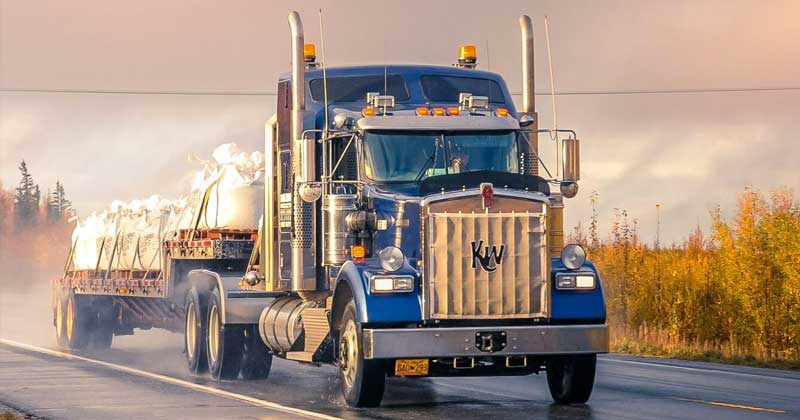Types of Housing in Canada and the Process of Home Construction

Before buying a house in Canada, it's worth learning about the construction process, as Canadian home building techniques may differ from what you're used to.
The Canadian real estate market offers a wide range of residential properties, each with its own unique features and advantages. Let's look at the main types of housing available in Canada and their characteristics.
- Condominiums, or "condos", as they're often called in Canada, are typically apartment buildings or townhouses that can also follow a condominium model. When you live in a condo, you own the unit but not the land it's built on or any common areas. Demand for condos continues to grow, especially in major cities like Toronto and Vancouver. This is because single-family home prices have risen significantly, while condos remain a more affordable option. In 2024, there's also growing interest in "smart" condos equipped with energy-saving systems and remote control of appliances and climate.
- Single-family home is a house that stands on its own. In Canada, it's often called a "detached" house and is typically the most expensive type of housing due to land costs. When you live in a single-family home, you own both the house and the land it's on. These homes remain popular among families, but rising property prices are causing many to consider moving to suburbs or less populated regions of Canada where housing is more affordable. In 2024, many single-family homes are being equipped with solar panels and other systems to reduce energy costs.
- Townhouse is a building with several multi-level apartments, where each unit usually has a separate entrance from the street. Townhouses offer a great compromise between condos and single-family homes: they provide more personal space and autonomy compared to condos but remain more affordable than detached houses. The popularity of townhouses continues to grow due to increasing land costs and dense urban development.
- Semi-detached house is connected to another house on one side. Owners are only responsible for the care and maintenance of their side, as in a single-family home. Owners of such houses own their side of the property, including the land it's on, and are responsible for its care and maintenance. In recent years, there's been growing interest in these homes among younger generations as they offer an affordable alternative to detached houses.
- Duplex/triplex is a building divided into several parts. As with semi-detached houses, each household has a separate entrance and is responsible for maintaining their part of the property. Typically, you buy the entire property and rent out an apartment to offset your mortgage payments. In 2024, as housing prices continue to rise, these properties are becoming particularly attractive to investors and families looking to share housing costs.
Today we'll talk about building single-family homes in Canada.
Construction: Materials and Technology
Most Canadian homes are built to withstand Canada's harsh climate, keeping them warm and dry in winter. This applies to houses built over the last 50 years as well as modern projects that actively incorporate new energy-saving technologies. In 2024, the construction of eco-friendly homes using renewable resources and "smart" energy management systems is becoming increasingly popular.
Houses in Canada predominantly have a wooden frame with a concrete foundation underground. Wood-frame construction remains the most popular in North America due to its affordability, speed of construction, and resilience to climate conditions. With growing awareness of climate change, many developers in 2024 are switching to eco-friendly and recycled materials such as bamboo, eco-wool, and renewable wood. These materials not only reduce the carbon footprint of construction but also make homes more energy-efficient.
In some areas of Canada where bedrock is close to the surface, houses are built on a concrete "pad" or, as is often the case in parts of British Columbia, on a concrete "basement" which forms the first floor, with the main living area on the second floor. In line with modern trends, basements are used not only for storage or technical equipment but also for creating additional living spaces such as home offices or entertainment areas, which has become particularly relevant after the pandemic.
Basements typically house furnaces (in large or two-story homes) that distribute heat throughout the house via a duct system, and a hot water tank (which supplies the entire house instead of small boilers throughout). In some parts of Canada, homes have outdoor central air conditioners that distribute air through the same ducts. Canadian homes may also have a separate laundry area with a washer and dryer.
You'll see most brick houses in Ontario. But more often than not, if you see bricks, it's just a veneer attached to the outside of a wooden frame. In recent years, cladding materials have become more diverse and energy-efficient. For example, using insulation panels under brick facades helps retain heat and reduce heating costs.
Roofs are often covered with asphalt or cedar shingles, although metal roofs are becoming increasingly popular. These roofs last longer, require less maintenance, and better protect the house from extreme weather conditions such as strong winds and snow. Currently, metal roofs are also becoming popular among those looking to install solar panels for renewable energy production.
Advantages of Wood Construction
Canadian wood-frame house construction may use dimensional lumber, engineered wood products, and structural wood panels in wall, floor, and roof assemblies that are strong, economical, and quick to assemble.
The Canadian Home Builders' Association says that a well-designed and constructed wood-frame house has many advantages:
- it's quick and easy to build and repair;
- it's durable;
- it's built from renewable resources;
- wood is a natural insulator that's easy to insulate to minimize heating and cooling costs;
- it's strong, lightweight, and flexible;
- it easily adapts to a range of wind and snow loads across Canada;
- it's easily reinforced to withstand extreme winds and earthquakes;
- it adapts to all climate conditions — from hot and humid to extremely cold;
- it can meet or exceed established levels of fire safety and sound control.
Passive Houses
One of the key trends in Canada in 2024 has been the construction of passive houses. These homes are designed to minimize energy consumption through high thermal insulation, quality ventilation, and efficient use of solar heat. Passive houses allow residents to significantly save on heating and cooling costs, while also helping to reduce their carbon footprint.
Modular Homes and 3D Printing
In 2024, modular homes and 3D printing technologies emerged as key innovations in construction. Modular homes are prefabricated structures manufactured in factories and assembled on-site, significantly reducing construction time. These homes have become particularly popular in regions with high labor and land costs, as they substantially lower construction expenses without compromising quality.
3D printing is also gaining traction in Canadian construction. This innovative method allows for creating individual house parts using 3D printers, reducing waste, speeding up the process, and opening new design possibilities. These homes can be built faster and at a lower cost, making them especially attractive to younger generations and investors.
Stages of House Construction in Canada
While construction stages may vary due to the wide range of house styles and sizes, certain basic principles apply. Construction time depends on many factors, especially the size and complexity of the house. For average-sized homes, the process typically takes about 16 weeks from start to finish. More complex houses may require 18 weeks or more.
We'll outline the typical construction process for a single-family home. Multi-unit buildings and larger condominiums often follow a different construction process.
The construction process and timeline also depend on the house size and style, lot, construction methods used, number of municipal inspections, labor availability, and many other factors.
First Stage: Pre-Construction
Before any construction begins, your house plans are developed, finalized, and submitted to the municipal office for building permits. Permits may be required for all or some of the following: construction, electrical, plumbing, septic system, and sewage.
Prior to this, several on-site tests may be conducted to examine groundwater levels, soil, and ground-bearing capacity, as well as environmental tests. This information may lead to final engineering adjustments in the plans.
Second Stage: Foundation
The house area is marked out and the land is prepared. Often, topsoil is removed and stored elsewhere for later use. Excavation is carried out, and footings (concrete pads to support foundation walls) are formed and poured. Water, electricity, phone, and cable TV may be connected at this time.
Foundation walls are erected (using concrete in temporary wooden forms or permanent insulated blocks, concrete blocks, or preserved wood). The foundation may be insulated and waterproofed. Drainage is installed to prevent moisture from entering the ground.
At this point, the builder may ask you to start making selections — choosing flooring, tiles, cabinets, and so on. Although it will be several weeks before these items are installed, they need to be ordered in advance to avoid delays later.
Photo: Canadian Home Builders' Association/chba.ca
Third Stage: Framing
Exterior walls, interior partitions, and the roof are assembled. This usually means it's time for framing and applying exterior sheathing.
Once the house is fully framed, windows and doors are installed.
The basement is completed. Electrical, plumbing, and heating, cooling, and ventilation ducts are installed.
At this stage, the municipality will likely require a structural inspection to ensure the house meets all building code requirements. Electrical and plumbing work will also likely be inspected.
Fourth Stage: Interior and Exterior Work
Over the next few weeks, a lot of work happens inside and outside the house, much of it simultaneously.
Exterior walls and roof are insulated, and a vapor barrier is installed. Another municipal inspection may be conducted before drywall installation to ensure this work was done properly. Heating and cooling systems, including fireplaces, are installed.
Walls and ceilings are painted, floors are laid, and kitchen and bathroom cabinets are installed. Plumbing and electrical fixtures are put in place, trim is applied, and interior doors are hung.
Outside, siding and the porch are installed, along with eavestroughs. Final grading of the lot is done, and driveways and walkways are installed.
Several additional municipal inspections may be conducted, such as after interior finishing to check stairs, railings, and other health and safety-related items, and/or after final grading outside the house. Final plumbing and electrical inspections will likely be required.
Photo: Canadian Home Builders' Association/chba.ca
Fifth Stage: From Near Completion to Handover
At this stage, your builder and team will be busy with finishing touches and cleanup. You'll be invited to do a walk-through of your house with the builder. All final touches will be made. On possession day, you'll be handed the keys — the house is now yours!
If you want to learn about the possibilities and specifics of building your own house in Canada, read our article "Building a House in Canada: Questions, Answers, and Expert Advice".
















